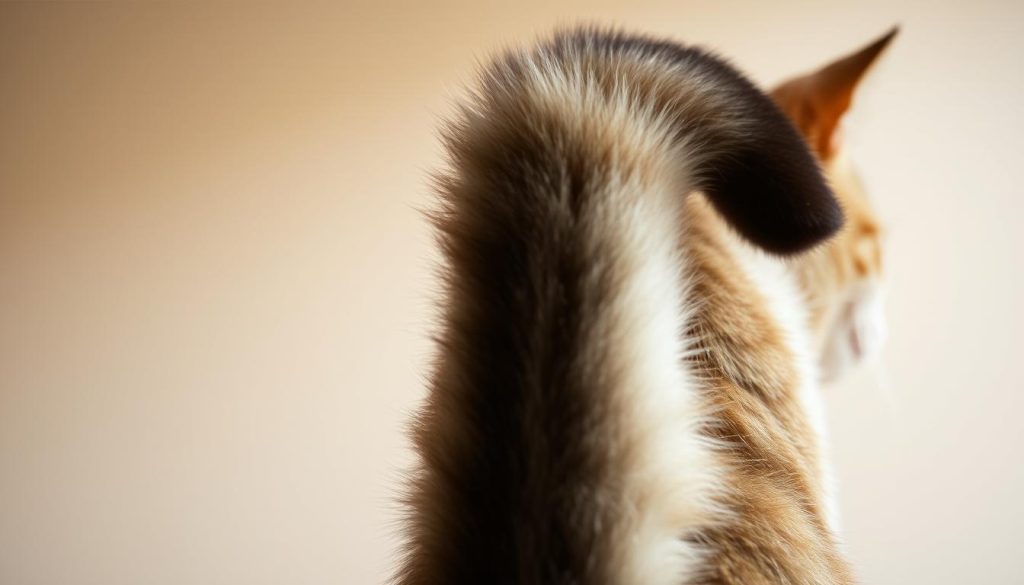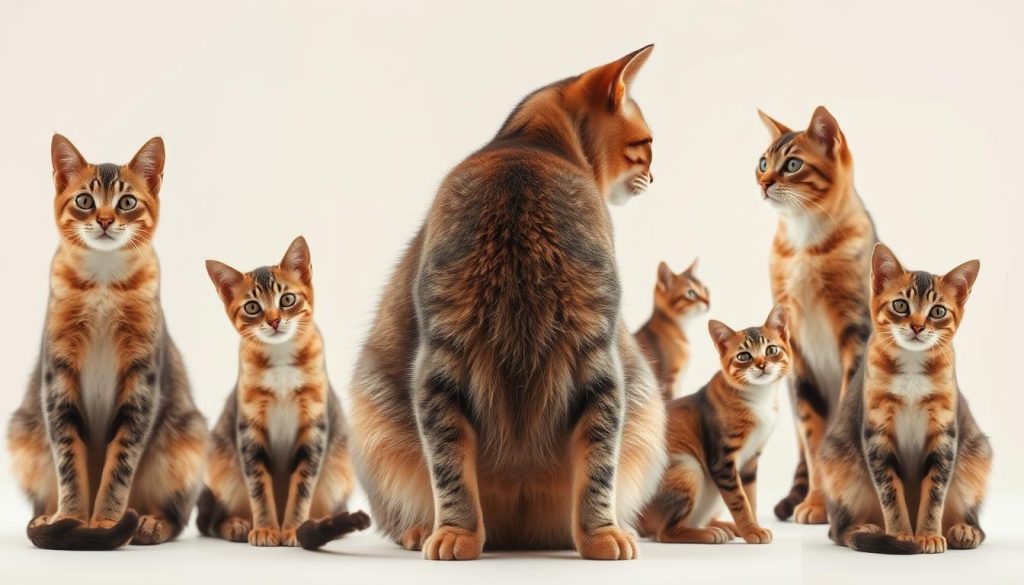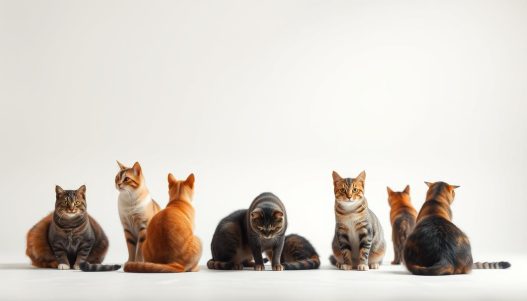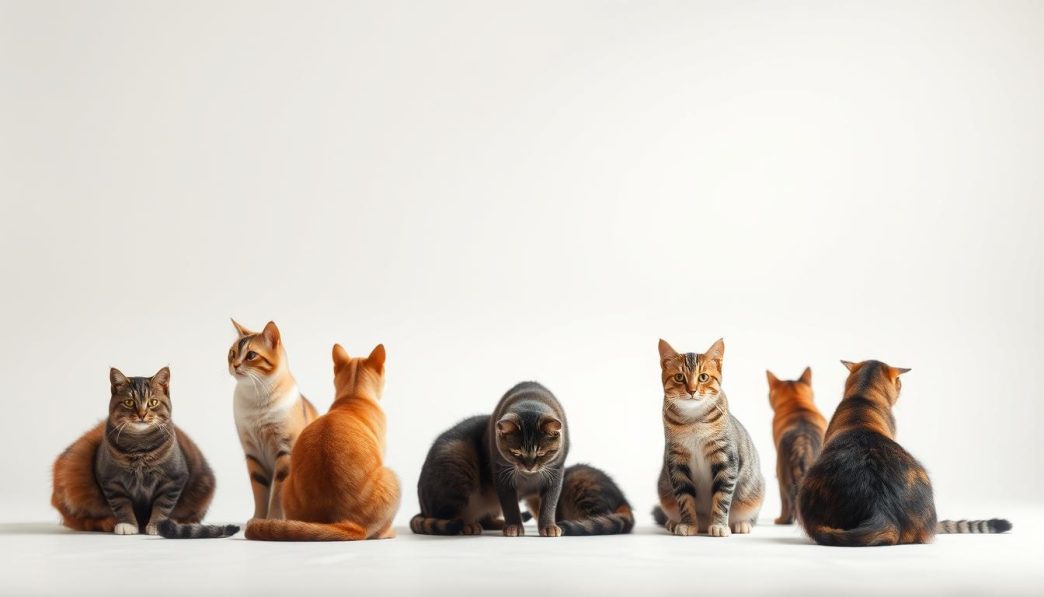Cats communicate primarily through non-verbal cues, and being able to interpret these signals can help you respond appropriately to their needs and emotions. By decoding feline communication, you can strengthen your bond with your cat and create a more harmonious home environment.
Being attuned to your cat’s emotional state can help you identify potential issues before they escalate. As you learn to read your cat’s behavior, you’ll become more aware of their needs and be better equipped to provide a happy and healthy life.
Key Takeaways
- Recognize the importance of cat body language in feline communication
- Understand how to decode your cat’s emotional state
- Learn to identify potential issues before they escalate
- Strengthen your bond with your cat through effective communication
- Create a more harmonious home environment by responding to your cat’s needs
The Secret Language of Felines
Understanding the secret language of felines can significantly enhance the bond between cat and owner. Cats communicate in a complex and subtle manner, primarily through body language, which includes postures, facial expressions, and tail positions.
Why Understanding Cat Communication Matters
Recognizing and interpreting cat body language is crucial for several reasons. Firstly, it helps in understanding their emotional state, whether they are feeling relaxed, anxious, or threatened. This understanding can prevent misunderstandings and strengthen the relationship between the cat and the owner. For instance, knowing when a cat is feeling anxious can prompt the owner to provide a more comforting environment.
- Improves the bond between cat and owner
- Helps in recognizing the cat’s emotional state
- Prevents misunderstandings and potential conflicts
How Cats Differ from Dogs in Communication Style
Cats and dogs exhibit distinct differences in their communication styles. Unlike dogs, which are often more overt in their expressions, cats are generally more subtle. Dogs may wag their tails to show excitement or happiness, whereas cats use a variety of tail positions to convey different messages, from confidence to fear. Understanding these differences is key to effectively communicating with your pet.
Key differences include:
- Cats are more subtle in their expressions compared to dogs.
- Cats rely heavily on body language, including tail positions and ear orientations.
- The context of the situation plays a significant role in interpreting cat behavior.
By grasping these nuances, cat owners can better understand their pets’ needs and emotions, fostering a more harmonious and empathetic relationship.
Understanding Pet Body Language: What Your Cat is Really Saying
The way your cat communicates can be quite complex, involving a range of subtle signals and cues. To truly understand what your cat is saying, it’s essential to delve into the history and development of feline communication.
The Evolution of Feline Communication
Feline communication has evolved significantly over time, shaped by both their wild ancestors’ needs and the process of domestication. Originally, cats used body language to convey messages related to survival, such as hunting and territorial markers. This primal language has been passed down through generations, influencing how domesticated cats communicate today.
How Domestication Has Changed Cat Signals
Domestication has played a crucial role in modifying cat behavior and their communication style. Unlike their wild counterparts, domesticated cats have adapted to living alongside humans, leading to changes in their signaling. For instance, domestic cats may use more subdued vocalizations and body language to communicate with their human caregivers. This adaptation highlights the flexibility of feline communication.
The Subtle Nature of Cat Communication
One of the challenges of understanding cat body language is its subtlety. Cats often convey their emotions and needs through slight changes in posture, facial expressions, and tail positions. Recognizing these subtle cues can greatly enhance your relationship with your cat, allowing you to respond to their needs more effectively. By paying attention to these signals, you can create a more harmonious and understanding environment for your pet.
Understanding the evolution and nuances of cat communication not only enriches your bond with your pet but also helps in providing better care tailored to their emotional and physical needs.
Tail Talk: Decoding Your Cat’s Most Expressive Appendage
A cat’s tail is a complex communication tool that conveys a range of emotions and intentions. By understanding the different positions and movements of your cat’s tail, you can gain valuable insights into their emotional state and respond accordingly.
Upright Tail: Confidence and Greeting
An upright tail is often a sign of confidence and a friendly greeting. When your cat approaches you with their tail held high, it’s likely they’re happy to see you. This posture can also indicate a sense of security and comfort in their environment.
Puffed Tail: Fear and Aggression
A puffed or bushy tail, on the other hand, can signal fear or aggression. When a cat feels threatened or scared, they may puff out their tail to appear larger. This is a natural defense mechanism, and it’s essential to recognize this signal to avoid escalating the situation.

Twitching Tip: Focus and Excitement
A twitching tail tip can indicate focus and excitement. This is often seen during play or when your cat is stalking prey. The twitching motion can also be a sign of agitation or irritation, so it’s crucial to consider the context.
Low or Tucked Tail: Submission and Anxiety
A low or tucked tail can be a sign of submission or anxiety. When a cat feels uneasy or submissive, they may lower their tail to signal their emotional state. This posture can also be a sign of fear or stress.
| Tail Position | Emotional State | Recommended Response |
|---|---|---|
| Upright | Confidence, Greeting | Engage, Pet |
| Puffed | Fear, Aggression | Give Space |
| Twitching Tip | Focus, Excitement | Play, Engage |
| Low/Tucked | Submission, Anxiety | Provide Comfort |
By decoding your cat’s tail language, you can better understand their emotional state and respond in a way that strengthens your bond and promotes a happy, healthy relationship.
Ear Positions and What They Reveal
The position and movement of a cat’s ears can indicate a range of emotions, from interest to fear. Cats use their ears to communicate, and by paying attention, you can gain insights into their feelings and respond appropriately.
Forward-Facing: Interest and Alertness
When a cat’s ears are facing forward, it’s often a sign that they’re interested in something or alert to their surroundings. This ear position can indicate curiosity or a readiness to engage.
Flattened Ears: Fear or Aggression
Ears that are flattened against the head can be a sign of fear or aggression. If your cat’s ears are back, it’s essential to assess the situation and determine the cause of their discomfort.
Relaxed Ears: Contentment
When a cat is relaxed, their ears will typically be in a neutral position, not too far forward or back. This indicates contentment and a sense of security.
Twitching Ears: Irritation or Concentration
Twitching ears can signify irritation or concentration. If your cat’s ears are twitching, it may be a sign that they’re focused on something or slightly annoyed.
| Ear Position | Emotional State |
|---|---|
| Forward-Facing | Interest, Alertness |
| Flattened | Fear, Aggression |
| Relaxed | Contentment |
| Twitching | Irritation, Concentration |
Understanding your cat’s ear language can significantly enhance your relationship with them. By recognizing the different ear positions and what they signify, you can better respond to your cat’s needs and emotions.
Eye Communication: Windows to Your Cat’s Emotions
Your cat’s eyes are windows to their soul, offering clues about their emotional well-being. Cats communicate a range of emotions through their eyes, from excitement and fear to trust and affection. By understanding these eye signals, you can better respond to your cat’s needs and strengthen your bond.
Dilated Pupils: Excitement or Fear
Dilated pupils in cats can indicate excitement or fear. When your cat’s pupils are wide, it might mean they are stimulated or anxious. Observing the context is crucial to understanding what your cat is feeling.
Slow Blinks: Trust and Affection
When your cat blinks slowly at you, it’s a sign of trust and affection. This behavior is often referred to as a “cat kiss.” Responding with a slow blink of your own can help reinforce your bond with your cat.
Staring: Challenge or Threat
A cat that stares intensely may be issuing a challenge or feeling threatened. It’s essential to recognize this signal to avoid escalating the situation. Giving your cat space when they stare can help prevent conflicts.
Half-Closed Eyes: Relaxation and Trust
Cats often half-close their eyes when they feel relaxed and secure. This sign indicates that your cat trusts their environment and the people around them.
| Eye Signal | Possible Meaning |
|---|---|
| Dilated Pupils | Excitement or Fear |
| Slow Blinks | Trust and Affection |
| Staring | Challenge or Threat |
| Half-Closed Eyes | Relaxation and Trust |
Understanding your cat’s eye language can significantly enhance your relationship. By paying attention to these subtle cues, you can create a more supportive and loving environment for your feline companion.
Body Postures and Their Meanings
The way a cat positions its body can reveal a lot about how they’re feeling. Cats use their entire body to communicate, adopting various postures that convey their emotions and intentions. From an arched back to a crouched position, each posture has a specific meaning.

Arched Back: Fear or Aggression
An arched back is one of the most recognizable fear or aggression signals in cats. When a cat feels threatened or scared, it will often arch its back, making itself appear larger. This posture is usually accompanied by other signs like hissing or growling.
Belly Exposure: Trust (Usually)
When a cat exposes its belly, it’s often a sign of trust. However, it’s essential to note that not all cats appreciate belly rubs, even when they expose their belly. Some cats may be vulnerable and relaxed, while others might be preparing to defend themselves.
Loaf Position: Contentment
The loaf position, where a cat curls up with its paws tucked under its body, is a sign of contentment. Cats often adopt this posture when they feel safe and relaxed in their environment.
Crouched Position: Hunting or Anxiety
A crouched position can indicate that a cat is either ready to hunt or feeling anxious. This posture is characterized by the cat lowering its body, often with its ears perked up and eyes focused. It signifies that the cat is alert and prepared to react.
| Posture | Meaning | Common Context |
|---|---|---|
| Arched Back | Fear or Aggression | Threatened or scared |
| Belly Exposure | Trust (usually) | Feeling relaxed or vulnerable |
| Loaf Position | Contentment | Feeling safe and relaxed |
| Crouched Position | Hunting or Anxiety | Ready to react or anxious |
By understanding these postures, cat owners can gain insights into their cat’s emotional state and create a more comfortable and supportive environment. Recognizing the different body postures and their meanings is crucial for building a strong bond with your feline companion.
Common Misinterpretations of Cat Body Language
Cat owners often struggle to accurately interpret their cat’s body language, leading to miscommunication and potential behavioral issues. This misinterpretation can stem from various factors, including a lack of understanding of feline communication nuances or projecting human emotions onto their cats.
One of the most significant challenges in understanding cat behavior is recognizing that certain actions or signals don’t always mean what we think they do. For instance, some common behaviors are often misinterpreted, leading to confusion and stress for both cats and their owners.
Purring Doesn’t Always Mean Happiness
Purring is a unique vocalization that cats make by using the laryngeal muscles to vibrate their vocal cords. While purring is often associated with contentment, it can also be a sign of anxiety, stress, or even self-soothing behavior. It’s essential to consider the context in which your cat is purring to understand its emotional state accurately.
The Belly Trap: Why Petting May Lead to Scratching
When a cat exposes its belly, it’s often perceived as an invitation for touch or petting. However, this exposure can also be a sign of vulnerability or defenselessness. Some cats may not appreciate being touched in this sensitive area, potentially leading to scratching as a defensive response.
Wagging Tails: Not Like Dogs
Unlike dogs, a cat’s tail wagging or twitching doesn’t necessarily indicate excitement or happiness. The movement and position of a cat’s tail can signify a range of emotions, from agitation to balance. Understanding the nuances of tail language is crucial for accurate interpretation.
Kneading: Comfort, Not Aggression
Kneading is a comforting behavior for cats, often associated with memories of nursing and comfort. While it might seem aggressive due to the clawing motion, kneading is generally a sign of relaxation and contentment.
| Behavior | Common Misinterpretation | Actual Meaning |
|---|---|---|
| Purring | Happiness | Can indicate anxiety, stress, or self-soothing |
| Belly Exposure | Invitation for touch | Vulnerability or defenselessness |
| Tail Wagging | Excitement or happiness (like dogs) | Range of emotions, including agitation or balance |
| Kneading | Aggression | Relaxation and contentment |
By understanding these common misinterpretations of cat body language, cat owners can improve their communication with their feline companions, reducing stress and strengthening their bond. Recognizing the subtleties of cat behavior is key to a harmonious and respectful relationship.
How to Respond to Your Cat’s Signals
Cats communicate primarily through body language, and responding appropriately is crucial for building trust and strengthening your bond.
Recognizing Emotional States
Understanding your cat’s emotional state is the first step in responding appropriately. Cats exhibit a range of emotions, from fear and aggression to affection and contentment.
Fear and Aggression: When your cat displays fear or aggression, it’s essential to give them space. Avoid direct eye contact or physical touch, as this can escalate the situation.
Building Trust Through Body Language
Building trust with your cat involves being mindful of your own body language and responding to theirs in a way that is calm and non-threatening.
“The more you understand your cat’s body language, the more you’ll be able to respond in a way that strengthens your bond.”
Slow blinks, gentle petting, and soft speech can all contribute to a trusting relationship.
When to Give Space vs. When to Engage
Knowing when to give your cat space and when to engage with them is crucial. If your cat is showing signs of fear or aggression, it’s best to give them space.
| Cat’s Signal | Response |
|---|---|
| Fear/Aggression | Give Space |
| Affection/Contentment | Engage |
Using Your Own Body Language to Communicate
You can also use your body language to communicate with your cat. By being calm, gentle, and predictable, you can help your cat feel more secure.
Consistency is key when using your body language to communicate with your cat. Avoid sudden movements or loud noises, which can startle your cat.
By responding appropriately to your cat’s signals and using your own body language effectively, you can build a stronger, more trusting relationship with your cat.
Conclusion: Becoming Fluent in Feline
Developing a deeper understanding of your cat’s body language can significantly enhance your relationship with your pet. By recognizing and responding to their signals, you can build trust, reduce stress, and create a more fulfilling life for both you and your feline companion.
Understanding cat language is a skill that takes time and attention to develop, but the rewards are well worth the effort. As you’ve learned, cats communicate through a complex system of tail positions, ear signals, eye contact, and body postures. By continuing to observe and learn from your cat’s behavior, you can refine your cat communication skills and become more attuned to their needs and emotions.
Achieving feline fluency allows you to better understand your cat’s emotional state, respond appropriately, and strengthen your bond. With practice and patience, you can become proficient in understanding your cat’s language, leading to a more harmonious and enjoyable relationship.






